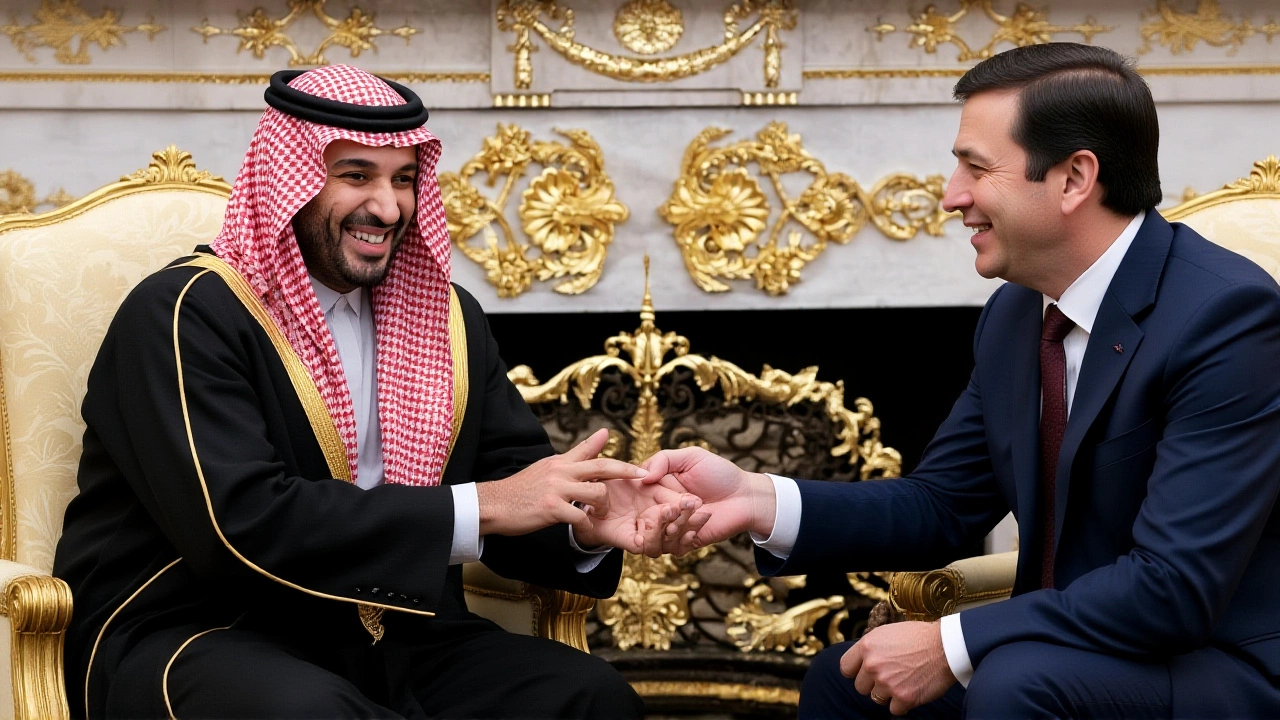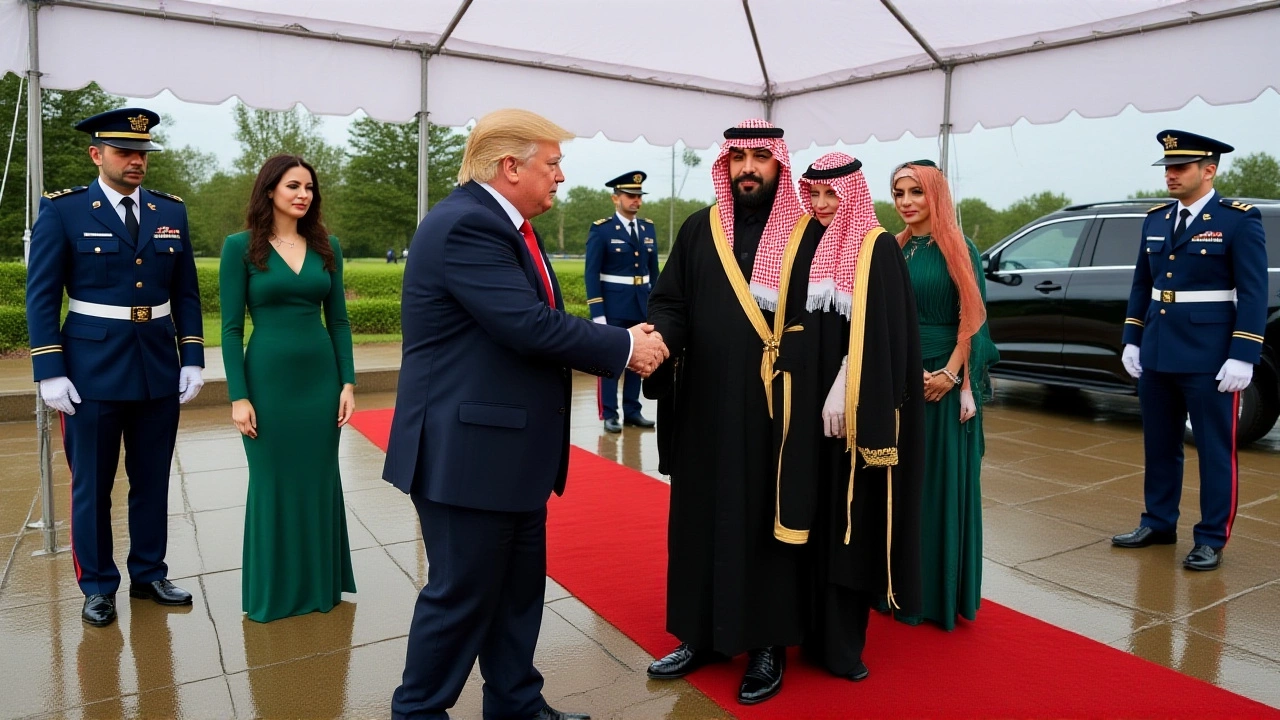On November 18, 2025, Donald J. Trump welcomed Crown Prince Mohammed bin Salman to the White House for a historic summit that reshaped the future of U.S.-Saudi ties — not just with words, but with a $1 trillion investment pledge and a sweeping defense deal. It was the first time the Saudi Crown Prince had set foot in the Oval Office since the global outcry over the 2018 killing of journalist Jamal Khashoggi, and the symbolism wasn’t lost on anyone watching. This wasn’t just diplomacy. It was a reset. A reckoning. And for many Americans, a chance to reclaim jobs, tech leadership, and strategic leverage.
A New Chapter After Years of Strain
The Biden administration’s frosty relationship with Riyadh — marked by public condemnation of human rights abuses, oil production disputes, and a cold shoulder to arms sales — had left the U.S. in a strategic vacuum in the Gulf. By contrast, Trump’s return to the presidency in January 2025 came with a clear message: alliances are transactional, and America’s interests come first. The November 18 meeting wasn’t just a photo op. It was the culmination of months of backchannel talks, and the first tangible outcome of Trump’s foreign policy pivot.The $1 Trillion Shift
During the meeting, Crown Prince Mohammed bin Salman announced a dramatic increase in Saudi investment: from the $600 billion pledged during Trump’s May 2025 visit to Riyadh to nearly $1 trillion. That’s a $400 billion surge in capital flowing into American infrastructure, AI startups, energy transition projects, and manufacturing hubs. The White House fact sheet released that same day emphasized that these funds would target sectors “where American workers are most vulnerable” — a direct jab at outsourcing trends that eroded U.S. industrial capacity over the last decade. The investment summit held the next day, November 19, brought together CEOs from General Dynamics Land Systems, Microsoft, NVIDIA, and BlackRock, alongside Saudi sovereign wealth officials. Concrete project pipelines are expected within 90 days — including AI data centers in Texas, port modernization in Louisiana, and semiconductor supply chain upgrades in Arizona.Defense: Tanks, Jets, and Jobs
The defense component was even more consequential. Trump approved the sale of future F-35 fighter jets to Saudi Arabia — a move previously blocked under Biden over concerns about technology leakage and regional escalation. Simultaneously, Riyadh committed to purchasing nearly 300 M1 Abrams tanks, all built at General Dynamics’ plant in Sterling Heights, Michigan. The White House estimates this deal alone will protect or create 8,200 American manufacturing jobs over the next five years. “It’s not just about weapons,” said a senior defense official briefed on the talks. “It’s about keeping our factories open, our engineers employed, and our supply chains intact. This is economic security with a bullet.”Normalization with Israel: The Unspoken Priority
While the economic and defense deals grabbed headlines, the most delicate negotiation happened behind closed doors. Trump pressed Crown Prince Mohammed bin Salman on normalizing diplomatic relations between Saudi Arabia and Israel — a cornerstone of his 2020 Abraham Accords strategy that stalled after he left office. Sources say the Crown Prince signaled openness to a framework, contingent on U.S. security guarantees and progress on Palestinian statehood talks. No formal announcement was made, but the door is now cracked open. That’s more than any U.S. president has achieved since 2020.
Behind the Scenes: A White House Reborn
The setting itself told a story. The White House, freshly renovated at a cost of $28 million between January and November 2025, gleamed with restored marble, upgraded security systems, and new state reception halls. The renovation wasn’t just cosmetic. It was a signal — to the world, and to domestic skeptics — that this administration meant to project power, prestige, and permanence. Foreign dignitaries were shown the new East Wing gallery, where portraits of past presidents now flank a new display: a framed copy of the 2025 Saudi investment agreement.What Comes Next?
The real test begins now. Can the $1 trillion be delivered without corruption, without political backlash? Will Congress approve the F-35 sale amid growing concerns over Saudi Arabia’s human rights record? And will the Crown Prince follow through on normalization talks — or use them as leverage for more concessions? White House economic advisors have already begun vetting potential projects. Early frontrunners include a joint AI research lab in Boston, a Saudi-funded hydrogen pipeline in the Gulf Coast, and a $200 billion renewable energy bond program backed by Saudi Aramco. All must clear Treasury and Defense Department reviews by February 2026.Why This Matters
This isn’t just about oil or jets. It’s about who controls the future of global technology and defense manufacturing. For years, China and Russia have filled gaps left by U.S. retrenchment. Now, with Saudi capital and American ingenuity aligned, the U.S. is reasserting its industrial dominance — not through tariffs, but through investment. For workers in Michigan, Arizona, and Ohio, this could mean paychecks that last. For U.S. allies in the Middle East, it means a stronger, more predictable partner. The twist? After years of moral posturing, the U.S. is now embracing realpolitik — and the world is watching to see if it works.Frequently Asked Questions
How does this affect American workers?
The $1 trillion Saudi investment is targeted at U.S. manufacturing, AI infrastructure, and energy projects expected to directly support over 8,000 jobs in the next five years — particularly in Michigan, where M1 Abrams tank production will expand, and in Arizona and Texas, where AI data centers are planned. The White House estimates an additional 15,000 indirect jobs in logistics, engineering, and supply chains.
Why did Trump approve F-35 sales now?
The decision reflects a strategic shift: the U.S. prioritizes economic and defense industrial benefits over previous concerns about technology transfer. Saudi Arabia has pledged to store F-35 software and maintenance systems on U.S.-controlled servers, easing security fears. The sale also locks in long-term maintenance contracts for U.S. defense contractors, creating a 20-year revenue stream.
What changed between the Biden and Trump administrations’ approaches to Saudi Arabia?
Biden’s administration froze arms sales, publicly criticized Saudi human rights policies, and reduced diplomatic engagement after the Khashoggi killing. Trump, by contrast, treats the relationship as a transactional partnership — prioritizing investment, defense contracts, and regional stability over public condemnation. The shift is ideological, not just tactical.
Is the $1 trillion investment guaranteed?
No. The pledge is non-binding and subject to U.S. regulatory approvals, geopolitical stability, and Saudi fiscal capacity. Past Saudi investment pledges — including the $600 billion from 2025 — have faced delays due to oil price volatility and domestic reforms. However, this round includes pre-vetted project pipelines and joint oversight committees, increasing the likelihood of execution.
What role does Israel play in this deal?
Trump is pushing Saudi-Israeli normalization as a strategic multiplier — hoping to create a U.S.-led security bloc in the Middle East. While no agreement was signed, Crown Prince Mohammed signaled willingness to engage in talks, contingent on U.S. support for Palestinian statehood and security guarantees. Progress here could unlock further U.S. defense and tech partnerships with Gulf states.
How does this impact global oil markets?
The deal doesn’t directly alter oil production quotas, but it signals U.S. willingness to re-engage with OPEC+ on terms favorable to Saudi Arabia. Analysts believe this could stabilize prices by reducing U.S.-Saudi friction — potentially lowering oil volatility by 15–20% over the next year, which benefits U.S. consumers and manufacturers.
